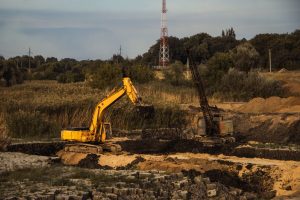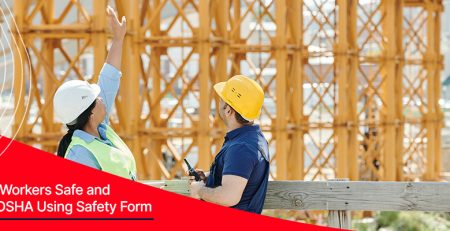What are the differences between MSHA and OSHA?
ranes2023-09-14T15:56:16-06:00For anyone who works in the heavy industry, understanding MSHA and OSHA regulations are extremely important. Not only is adherence to these laws critical for safety and compliance, but implementing staff training programs can ensure employees have the necessary skills to handle hazardous atmospheres.
Knowing the differences between MSHA (Mine Safety and Health Administration) and OSHA (Occupational Safety and Health Administration) standards can sometimes be confusing. Still, with a comprehensive understanding of each organization’s preservation goals, you can create effective tailored training that meets both agencies’ needs.
In this blog, we’ll break down what makes them different. So your workforce has all the tools they need when working in high-risk environments!
MSHA training is required for those who work in the mining industry
The mining industry employs diverse highly-trained professionals working in potentially dangerous conditions to extract valuable resources from the earth. Above and below ground, mining work requires specialized skills and knowledge to guarantee the safety and success of operations.
From operating heavy machinery and monitoring sophisticated
equipment to conducting geological surveys and overseeing entire mining sites, mining workers power our society’s technological advancements and facilitate economic growth. The mining industry relies on expert practitioners with extensive training to navigate the unique challenges of this critical field.
Even if an employee is the mine accountant, they must receive MSHA training. MSHA training is essential for anyone who meets this definition to meet safety regulations and has to be renewed annually via refresher courses; two years after initial training, miners must complete a refresher course every thirteen months.
 As such, all miners must attend their regular MSHA training sessions to remain up-to-date with the latest safety standards and practices. To ensure a safe working environment for miners, the Mine Safety and Health Administration (MSHA) has established rigorous training requirements based on the specific types of mining operations.
As such, all miners must attend their regular MSHA training sessions to remain up-to-date with the latest safety standards and practices. To ensure a safe working environment for miners, the Mine Safety and Health Administration (MSHA) has established rigorous training requirements based on the specific types of mining operations.
Whether extracting sand and gravel or coal from deep within the earth’s surface, mining companies must provide comprehensive training for all workers as outlined in Parts 46 and 48 of Title 30 of federal regulations. These distinct parts provide unique rules for miner training that must be followed in order for employees or operators to receive certification. While navigating the nuances of these requirements can prove challenging, proper training is critical to minimize risks and protect the lives of those employed in this dangerous but essential industry.
By understanding how MSHA designates categories for training and implementing the necessary instruction for all staff, mining operations can demonstrate a strong commitment to safety. Employers must familiarize themselves with how their company fits the MSHA rules to ensure their miners follow the correct regulations.
OSHA training is required for construction workers
OSHA training is necessary for anyone working in the construction industry. This essential training ensures that workers are comfortable and confident in the safety of their environment and is mandatory for any area of safety that MSHA training does not cover.
OSHA-provided training has been proven to increase workplace safety by reducing instances of OSHA “violations,” which protects both employers and employees alike. With this training, OSHA aims to prevent workplace injury, decrease incidents and deaths associated with jobs, and introduce workers to modern standards in safety equipment development. OSHA online classes provide comprehensive ways for workers to gain the knowledge they need on an open schedule so that all employers can confidently know their staff is trained and certified.
Both types of training cover safety hazards and how to avoid them
When MSHA (Mine Safety and Health Administration) training was first implemented, mining fatalities in the United States totaled an unfortunate 242 in one year. Thanks to the more focused approach of this training on mining-specific hazards, that number has drastically reduced over time.
021 was OSHA’s 30th anniversary. Over the past three decades, OSHA’s rigorous standards and training programs have been instrumental in reducing workplace fatalities by over half and illnesses/injuries by nearly as much. Thanks to OSHA’s widespread trainings and resources for employers and workers in every major industry, machine guarding, proper lifting techniques, and other critical safety practices are now common knowledge.
By promoting a culture of prevention, OSHA and its partners have effectively eliminated many of the hazardous conditions that once put millions of workers at risk each day. Here’s to over 30 years of progress—and continued advancement in the decades ahead.
MSHA training focuses more on mining-specific hazards, while OSHA training covers general safety issues
MSHA training is vital to those working in the mining industry since it focuses on the unique safety risks associated with underground mines, quarries, and other surface mining sites. MSHA training covers topics such as confined spaces, stopping, shafting, hoisting, explosives storage, and many more.
OSHA general safety training builds upon the mining-specific lessons of MSHA by addressing universal workplace hazards. The curriculum covers essential topics such as fall protection systems to prevent deadly drops, scaffolding safety to ensure proper support of elevated work platforms, and respiratory protection against airborne contaminants.
Machine safeguarding and lockout/tagout procedures round out the instruction by teaching technicians how to service equipment without the risk of sudden, catastrophic re-activation. Past tragedies inform these proactive measures to help large industrial companies eliminate repeating the same mistakes and endangering more lives. Overall, the twin goals of MSHA and OSHA are to use the hard-won experience to secure a safer future for all employees.
MSHA and OSHA courses are both available online and in person
For those looking to increase their understanding of worker safety and health regulations, online and in-person MSHA and OSHA courses are the perfect solutions. The Mine Safety and Health Administration (MSHA) provides educational offerings on its website for those who wish to learn about workplace health and safety rules for miners.
Similarly, employers can access the Occupational Safety and Health Administration (OSHA) to find information regarding workplace practices that protect health and prevent illness.
Additionally, OSHA offers a variety of training courses both online and through various networks of qualified instructors. Whatever format you choose, these courses will equip you with the knowledge to maintain safer workplaces that comply with government standards.
Working in the mining industry or on a construction site is no walk in the park. That’s why MSHA and OSHA training are required; to provide workers with the skills they need to work safely and avoid potential hazards. While we’ve discussed some differences between MSHA and OSHA safety training, both cover critical topics such as potential workplace hazards and unsafe behaviors.
So whether you need an MSHA or OSHA course, there are plenty of options out there, both online and in-person. Don’t wait until it’s too late – get that safety training today! ClockWork Safety offers company-provided safety courses, so immediately take advantage of this opportunity. Make yourself a priority by staying safe and up-to-date with the industry’s latest regulations; stay informed and train today!


